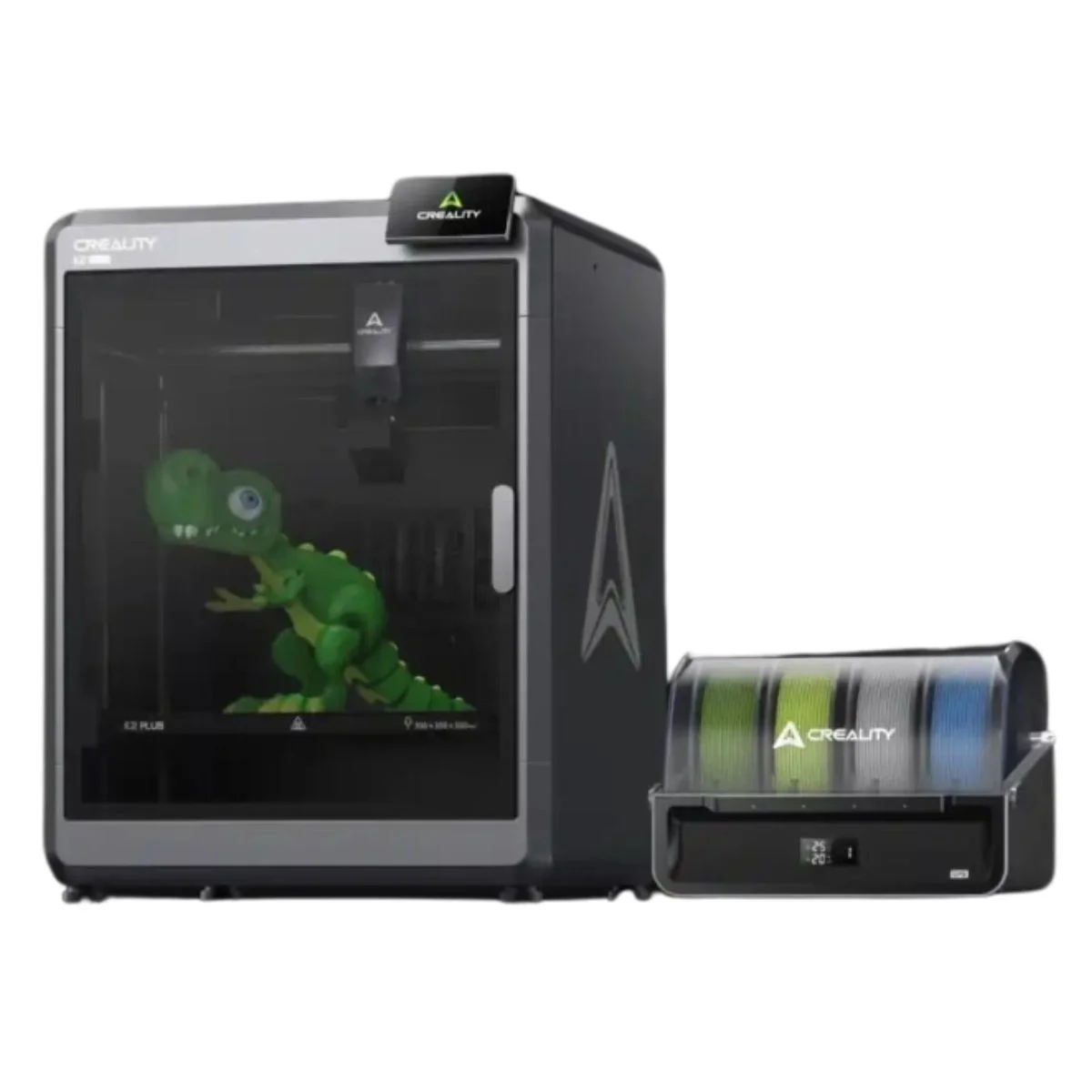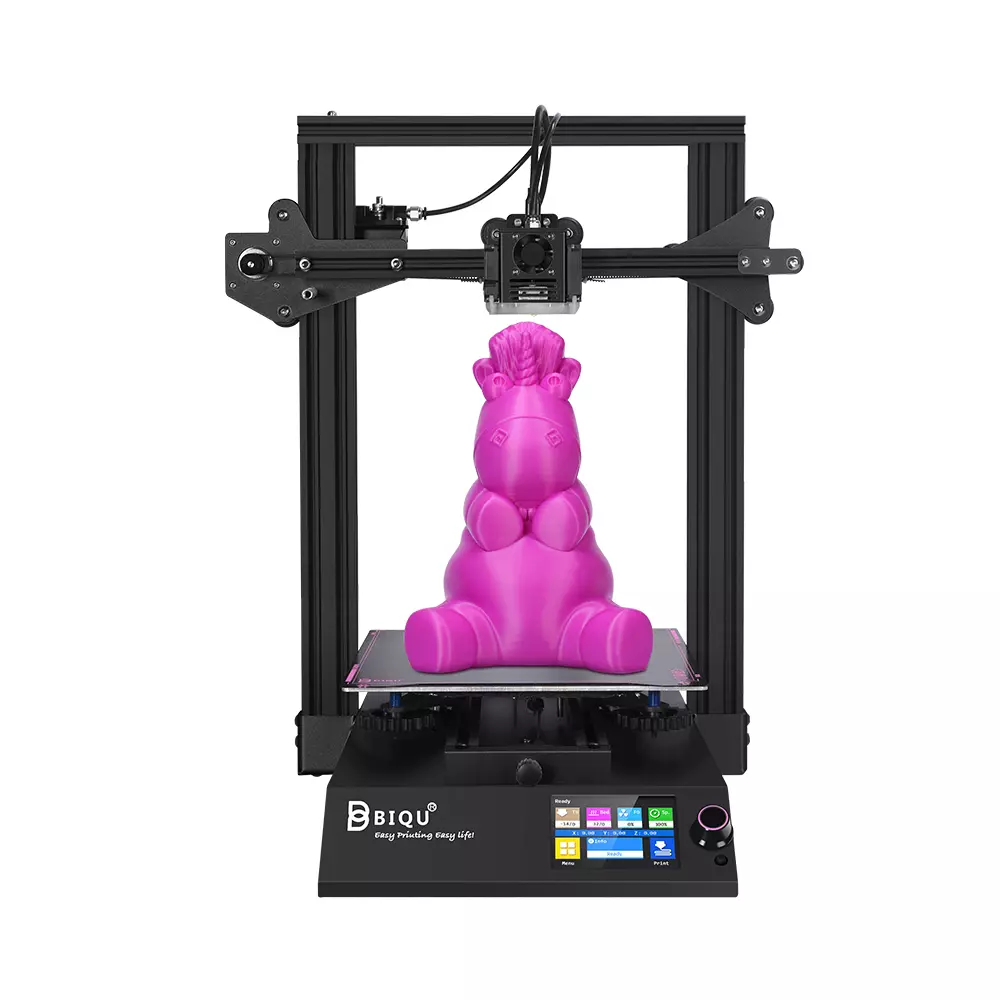Compare K2 Plus vs BIQU B1
Comparison between the best 3D printers
Choose the best 3D printer at the best price. The cheapest 3D printers are here.
Buy a 3D printer here with 3D Fila.
 |
 |
|
| Model | K2 Plus[BUY K2 Plus] |
BIQU B1 |
| Printing Material | Filament | Filament |
| Buy Filament for Creality K2 Plus | Buy Filament forBigTreeTech BIQU B1 | |
| Estimated price | $1500,00 | $269,00 |
| Manufacturer | Creality | BigTreeTech |
| Release Year | 2024 | 2020 |
| Print Volume [mm] | 350x350x350 | 235x235x270 |
| Printer Size [mm] | 495x515x640 | 412x402x492 |
| Weight [kg] | 33,5 | 8,00 |
| Power Loss Recovery | YES | YES |
| Enclosed printer | YES | NO |
| Bed Leveling | Automatic | Manual |
| Filament End Sensor | YES | YES |
| Bed type | Heated | Heated |
| Power supply system | Direct Drive | Bowden |
| Standard nozzle | 0,4 | 0,4 |
| Maximum Nozzle Temperature [°C] | 350 | 250 |
| Maximum Bed Temperature [°C] | 120 | 100 |
| Maximum printing speed [mm/s] | 600 | 100 |
| Filament holder | YES | YES |
| Camera for supervision | YES | YES |
| Recommended filaments | PLA, PETG, PET, TPU, PA, ASA, PC, PLA CE, PA-CF, PET-CF | PLA, TPU, ABS, PETG |
| Recommended slicers | Creality Print 5, Bambu Studio, Super Slicer, Cura, Prusa Slicer, Orca Slicer | Cura, Simplify, Slic3r |
| Maximum Resolution [mm] | 0,1 | 0,1 |
| Processor | 32 Bits BTT SKR V 1.4 | |
| Display | Touchscreen 4,3'' | Touchscreen TFT 3,5'' |
| Power Supply | 1200 W | 24V / 360W |
| Connectivity | USB / WIfi | SD / USB |
| Operating systems | Windows, Linux, Macbook | Windows, Mac, Linux |
| Date of registration in the system | 2024-06-26 | 2021-04-14 |
| Release date | 2024 | 2020 |
| Extra features | The Creality K2 Plus 3D Printer stands out for its multicolor printing, large build volume (350x350x350 mm) and Apus Direct Drive extruder with tri-metal protection nozzle. It features automatic anti-tilt leveling, FOC closed-loop motors and active chamber heating. In addition, it has an intelligent CFS filament management system, cameras for calibration and monitoring, a 4.3-inch touchscreen and advanced sensors to optimize the printing process. | The BIQU B1 is an advanced 3D printer with a silent 32-bit BTT SKR V1.4 motherboard and ARM Cortex-M3 CPU, offering DIY interfaces (I2C, SPI, WiFi) and dual Z-axis. Its dual BTT B1 TFT35 V3.0 operating system allows real-time monitoring and multiple printing modes, including G-code visualization effects. It stands out for its BIQU SSS (Super Spring Steel), ensuring easy model adhesion and simplified removal, with the possibility of using it on both sides. It includes a filament sensor, automatically pausing printing in case of filament breakage. The multicolored RGB lights integrated into the hotend allow you to view the printing status even at night. Additional notes include the need for a BIQU-specific Type-C cable and extra interfaces for smart filament sensor and BL Touch. |
| Support for multiple colors and materials (AMS and CFS) | YES | NO |
Notes * |
||
| Cost-benefit | 7 / 10 | 7 / 10 |
| Hardware | 7.2 / 10 | 2 / 10 |
| Tela | . | . |
| Print volume | 4 / 10 | 3 / 10 |
| Performance | 5 / 10 | 1 / 10 |
| [BUY K2 Plus] |
Conclusion |
| In conclusion, the comparison between the Creality K2 Plus and the BIQU B1 highlights distinct advantages and considerations for potential buyers. The Creality K2 Plus, while significantly more expensive, offers a larger print volume and an array of advanced features that cater to serious users or professionals. Its automatic bed leveling, enclosed design, and high maximum nozzle temperature make it suitable for a broader range of filaments and complex projects. Additionally, the K2 Plus is equipped with enhanced monitoring and control features, like a touchscreen interface and a filament management system, providing a robust and user-friendly experience. On the other hand, the BIQU B1 stands out as a more budget-friendly option, making it accessible for hobbyists or those new to 3D printing. While it lacks some of the advanced features and larger build capacity of the K2 Plus, it still delivers an efficient printing experience for standard materials and offers a good set of functionalities, including a filament sensor and real-time monitoring capabilities. Its simpler design allows for easier maintenance and a lower entry cost for those curious about 3D printing without the steep investment. Ultimately, the choice between these two printers will depend on the user's priorities—whether they seek high-end features and a professional-grade build or prefer a cost-effective option with essential functions. Each model has its merit, catering to different segments of the 3D printing market. |

